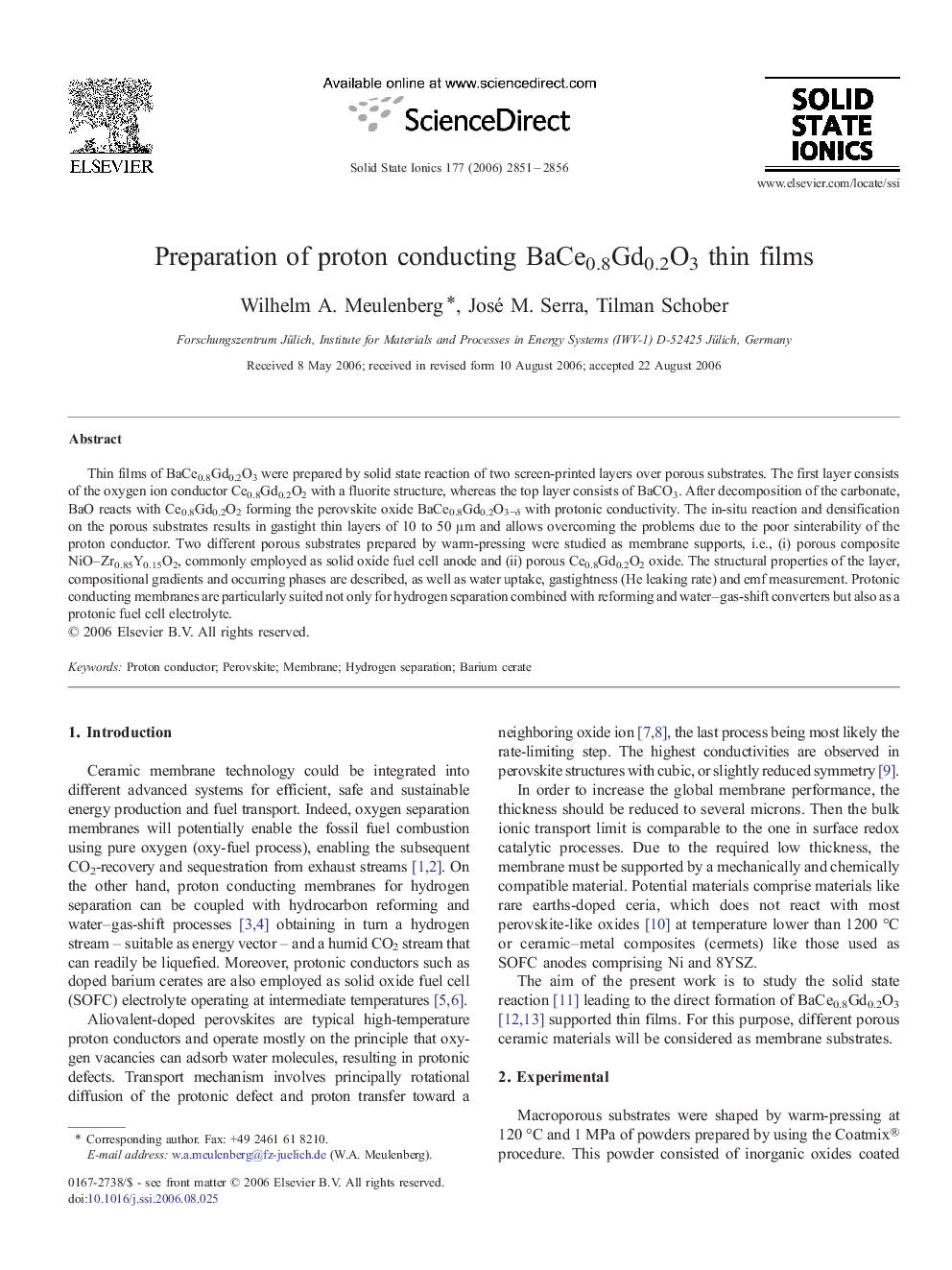| Article ID | Journal | Published Year | Pages | File Type |
|---|---|---|---|---|
| 1297206 | Solid State Ionics | 2006 | 6 Pages |
Abstract
Thin films of BaCe0.8Gd0.2O3 were prepared by solid state reaction of two screen-printed layers over porous substrates. The first layer consists of the oxygen ion conductor Ce0.8Gd0.2O2 with a fluorite structure, whereas the top layer consists of BaCO3. After decomposition of the carbonate, BaO reacts with Ce0.8Gd0.2O2 forming the perovskite oxide BaCe0.8Gd0.2O3âδ with protonic conductivity. The in-situ reaction and densification on the porous substrates results in gastight thin layers of 10 to 50 μm and allows overcoming the problems due to the poor sinterability of the proton conductor. Two different porous substrates prepared by warm-pressing were studied as membrane supports, i.e., (i) porous composite NiO-Zr0.85Y0.15O2, commonly employed as solid oxide fuel cell anode and (ii) porous Ce0.8Gd0.2O2 oxide. The structural properties of the layer, compositional gradients and occurring phases are described, as well as water uptake, gastightness (He leaking rate) and emf measurement. Protonic conducting membranes are particularly suited not only for hydrogen separation combined with reforming and water-gas-shift converters but also as a protonic fuel cell electrolyte.
Related Topics
Physical Sciences and Engineering
Chemistry
Electrochemistry
Authors
Wilhelm A. Meulenberg, José M. Serra, Tilman Schober,
